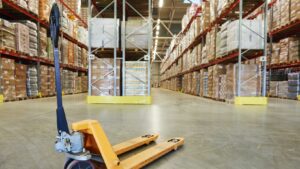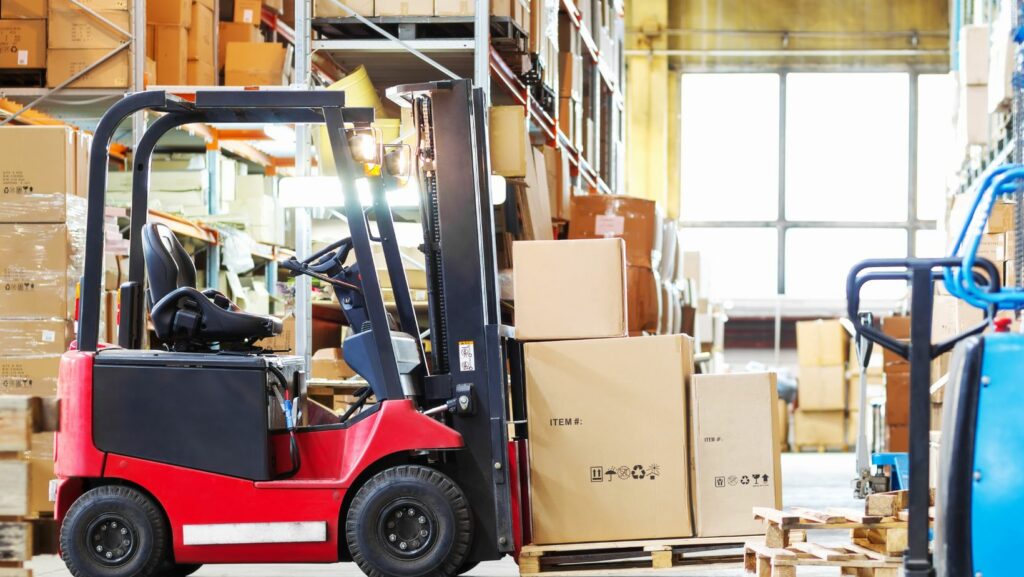In the bustling world of commerce, a well-organized warehouse is the backbone of any successful business. It’s where products are stored, sorted, and dispatched, making it a crucial cog in the supply chain wheel. The right warehousing storage solution can streamline operations, boost productivity, and ultimately, enhance a company’s bottom line.
Warehousing Storage Solutions

Warehousing storage solutions come in various forms. These types, such as selective racking and drive-in racking, each serve unique needs for different goods and operations. Selective racking, for instance, suits businesses dealing with high turnover items, such as grocery stores. On the other hand, Drive-in racking works best for items with longer shelf lives, like canned goods in a warehouse.
Similarly, another solution is mezzanine flooring. Businesses use this when they require additional storage without expanding their physical space. As a result, they optimize vertical space, increase capacity, and enhance operations efficiency.
Each of these storage systems plays a critical role in a warehouse. It’s crucial for companies to understand, analyze, and select the optimal solution based on their specific requirements and constraints. Such a choice paves the way for organized storage, efficient inventory management, and increased productivity.
Data-driven decisions also play an essential role in selecting the best warehousing storage solution. Companies often rely on insights garnered from inventory data, product throughput, and spatial limitations. By making data-backed choices, companies can ensure a well-structured, efficient warehousing environment.
Innovative Technologies in Warehousing

Emerging technologies present viable solutions to meet modern warehousing demands. Digitalization, for instance, automates labor-intensive processes, bolstering efficiency and productivity. Inventory management software exemplifies this, allowing precise, real-time tracking of goods, reducing errors in inventory counts (source: Gartner). Similarly, advancements in industrial robotics drive automation, enhancing throughput in picking, packing and sorting operations.
Radio Frequency Identification (RFID) technology offers benefits beyond traditional barcodes, including simultaneous scanning of multiple tags, and tracking objects within a warehouse without line-of-sight. This can lead to an effective system of locating goods and updating inventory.
Next, the use of drones has paved the way for innovative solutions in warehousing. Surveying large warehouse spaces, carrying out inventory checks, and assisting in picking operations are only a few of the tasks unmanned aerial vehicles can effectively perform.
On another note, wearable technology, like smart glasses, can guide staff in executing picking or assembly tasks, by offering hands-free access to real-time information.
Selecting the Right Warehousing Solution

To navigate the wide array of warehousing storage solutions, significant elements are taken into consideration. One ought to evaluate their inventory’s specific needs, balance storage capacity with throughput, and implement high-quality safety standards. Each storage solution, whether it’s a pallet racking system or a mezzanine floor, serves a unique functionality. For instance, businesses with a compact inventory prefer a drive-in racking system. On the contrary, those demanding quick access to loads favor selective racking. Moreover, innovative technologies, like RFID or inventory management software, yield real-time insights assisting in optimizing their warehousing solutions. Industrial robotics is employed for enhanced operations, demonstrating the transformation towards data-driven decision making. Thus, the right warehousing solution not merely depends on the business size but also on effective use of advanced technologies and comprehension of inventory needs.
Trends in Warehousing Solutions
The landscape of warehousing solutions is continually evolving. The shift towards data-driven decision-making is a clear trend, optimizing storage solutions based on unique inventory needs. Businesses are now recognizing the value of integrating advanced technologies like RFID, inventory management software, and industrial robotics. These tools not only provide real-time insights but also enhance overall operations.
Ultimately, the right warehousing solution is determined by a thorough understanding of inventory needs, storage capacity, and safety standards. As the warehousing industry continues to innovate, businesses must stay informed and adaptable to ensure they’re leveraging the most efficient and effective storage solutions available.

